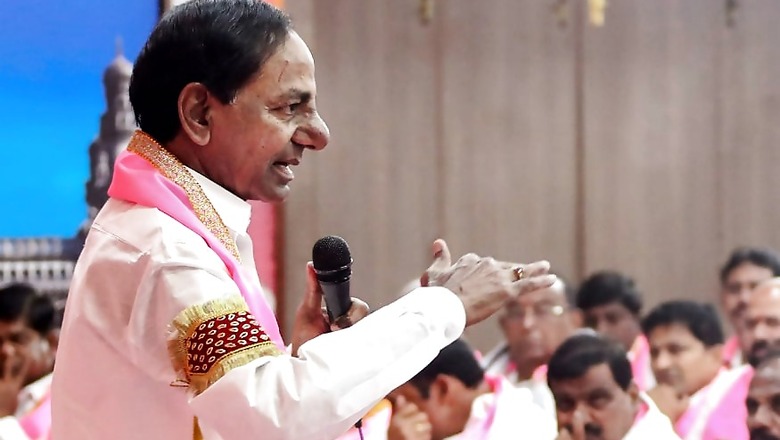
views
The spirit of the anti-defection law, which exists to ensure that MLAs cannot shift sides after winning on a party ticket, has been subverted consistently in Telangana over the last two terms of the state legislature.
In the last term (2014-2019) 26 Congress and TDP MLAs switched over to the TRS at various points in time and the Speaker kept demands for their disqualification pending till the end of the term. This made it impossible to challenge the issue in a court of law as that can be done only after the Speaker decides on the matter and eventually the matter became infructuous as the term came to an end.
A little over six months into the present term, 12 Congress MLAs have decided to merge with the TRS and the Assembly Speaker has allowed such a merger. The Congress is the principal opposition party with just 18 MLAs in the 119-member state Assembly. This decision may be challenged in a court of law and the Speaker’s decision isn’t final.
The law as it stands today, introduced in the Tenth Schedule in 1985 and later amended in 2004 to prevent horse trading and defections, explicitly states that those who split or resign from a party after an election will lose membership of the House, and the decision on disqualification will have to be taken by the Speaker.
It is important to note here that the law does not explicitly state that if more than a particular fraction of MLAs have moved from the parent party, they automatically get recognition. This is why the number of legislators who constitute the parent party is a grey area and legislators cannot change parties even if they have the numbers; the matter on who represents the parent party will have to be decided in a court of law.
However, the common thread in the last two terms of the state Assembly has been that opposition legislators shifted allegiance to the ruling party with total disregard to the anti-defection law and the Speaker was seemingly on their side.
Having stated this, it’s important to also understand the political implications and reasons behind exodus from the Congress.
The rebellion in the Congress, allegedly aided by the TRS, is a fallout of the party’s defeat in the Lok Sabha elections. While the Congress had performed badly in the state Assembly elections held in December — the TRS won 88 of the 119 seats — it managed to win three of the 17 parliamentary seats.
However, the BJP won four of the 17 seats and will now make every effort to build a base in the state and challenge the Congress’s claim to be the principal opposition party to the TRS. It must be noted here that before the parliamentary polls, the BJP was seen as a marginal entity in Telangana and had won only one seat in the Assembly polls held last year.
The sudden rise of the BJP in the 2019 parliamentary polls has upset equations in Telangana and there is a fear that the Congress may have to fight for survival in the state.
The TRS, too, has been rattled by the rise of the BJP, and by gaining 12 Congress legislators is reiterating its position as a party that has no opposition in the state assembly.
Chief Minister K Chandrashekar Rao’s daughter Kavitha Kalvakuntla faced a shock defeat in the Nizamabad parliamentary seat to BJP candidate D Arvind, and the TRS now seems keen to eliminate the Congress in the state assembly and show that it has the support of more than 100 MLAs in the Gouse – a brute majority.
The long-term ramifications of a sustained effort to relegate the Congress to a marginal player status are serious. This may well suggest a concerted effort by the TRS and the BJP to become the two principal players in the state and reduce the Congress to the third place.
(Author is a senior journalist. Views are personal)




















Comments
0 comment